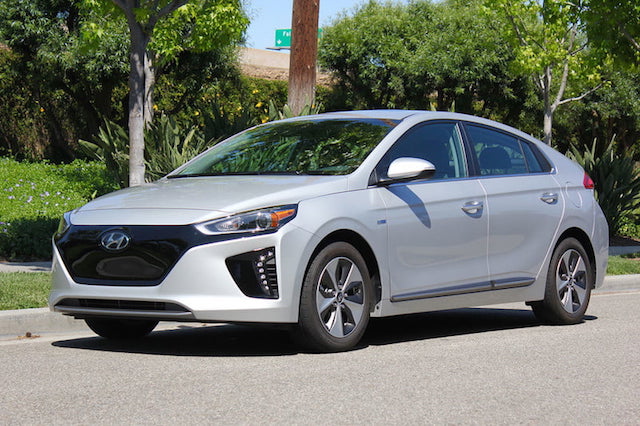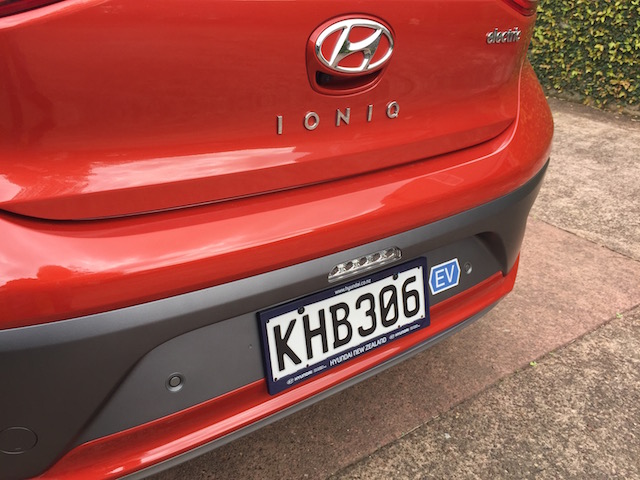
It’s impossible to ignore the advantages of cars that run on batteries alone, especially in a country like New Zealand with its renewable supply of comparatively cheap hydro-electric power.
One advantage is that average urban daily commutes are well within the range of every plug-in battery-electric car (BEV) on the NZ market.
Another is the rollout of public charging stations: within the next few years pretty much every BEV on the road will be within spitting distance of a quick-charge plug.
The Automotive News NZ Car of the Year for 2017 is the BEV Hyundai Ioniq. There are two other Ioniqs, too, the hybrid petrol-electric (HEV) and the plug-in hybrid electric (PHEV).
The PHEV doesn’t go on sale in NZ until later this month. All three Ioniqs are key to the South Korean carmaker’s plan to have 22 ‘green’ cars – including fuel-cell – in its line-up by 2020.
They won’t be just ‘green’ either. Hyundai has teamed with Silicon Valley company SoundHound to create a proactive voice control system called Houndify.
It will be able to handle multiple commands at once. Something like “Tell me what the weather will be like tomorrow and turn off the lights in our living room.” Houndify will debut on Hyundai’s fuel-cell SUV this year before a full rollout in 2019.
The BEV Ioniq is the best-price example in NZ of the feel-good simplicity of BEVs. There are two plug-in models, the entry-level Ioniq at $59,990 and the better-equipped Elite at $65,990.
Each runs a 28kWh lithium-ion battery pack and electric motor delivering 88kW/295Nm and driving the front wheels via a direct-drive reduction gear. A computer tells the electrics what to do next.
Three buttons on the car’s centre console tell the rest of the story: N is for neutral, R for reverse, D for drive. Range is around 200km from a battery pack with an unlimited 10-year warranty.
Apart from the battery pack and the electrics, there’s a couple of major differences – one visual, one out of sight – between BEV Ioniq and its hybrid stablemates:
- BEV has a somewhat closed front end design – there’s no need for a traditional grille to direct cooling air to a radiator.
- BEV doesn’t share the hybrids’ independent multi-link rear suspension. Hyundai went with a more compact torsion bar set-up to make room for the battery pack and a shallow but reasonably sized boot with a capacity of 350 litres. The hybrids’ boot can store 443 litres.
All three Ioniqs are based on a dedicated hybrid platform developed for Hyundai’s subsidiary company Kia for its small Niro, a crossover/ SUV smaller than its best-selling Sportage. Niro has been under evaluation for NZ.
BEV Ioniq weighs in at 1420kg and is a mix of high-strength steel for rigidity and aluminium panels to keep weight down. It’s 50kg heavier than the HEV Ioniq, but its weight is more evenly balanced, a feature obvious when pushing on through corners.
Not that BEV Ioniq is about performance. Sure there’s instant power from the electric powertrain, hand-in-hand with a smooth and vibration-free delivery. But the absence of engine noise highlights road, tyre and wind noise as speed increases, certainly on some surfaces.
Ride and handling is good. Steering is reasonably well weighted but there’s little tell-tale information getting to the D-shaped helm from the front wheels.
BEV Ioniq is at its untroubled best when being driven smoothly to pump energy back into its battery pack via the regenerative braking system. That way the 200km range can last longer.
There are three ways of doing this via gearshift-type paddles behind the steering wheel. Coasting Energy Recuperation, Hyundai calls it.
It begins with fairly weak (Stage 1) regenerative braking, hardly slowing the car down at all when lifting off the throttle.
Ramp the paddles up a notch (Stage 2) and BEV Ioniq noticeably slows. You can almost feel energy being pumped back into the battery. Another notch (Stage 3) and the car slows abruptly, almost as though you’re on the brakes.
Stage 1 regenerative braking made for overall smoother progress, but Stage 2 and Stage 3 certainly have a role to play. I liked Stage 2 best, but Stage 3 visibly improves battery range and lets you leave the brakes alone.
Pretty much everything about the BEV Ioniq is predictable and straight forward, an illustration of its feel-good simplicity. The interior is smart and roomy enough front and back and controls are intuitive. Hold the start button for a second or so and the instrumental panel lights up. You’re now good to go.
- Road safety campaigners are honing in on the fact that EVs force drivers to plan ahead on a long trip. Where to stop to quick-charge the car and take time away from the wheel.


